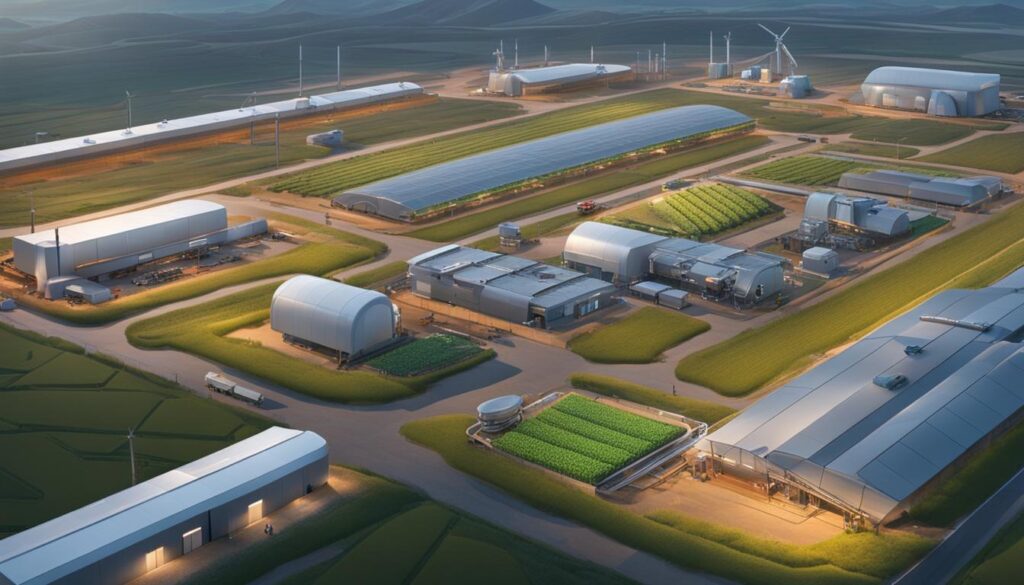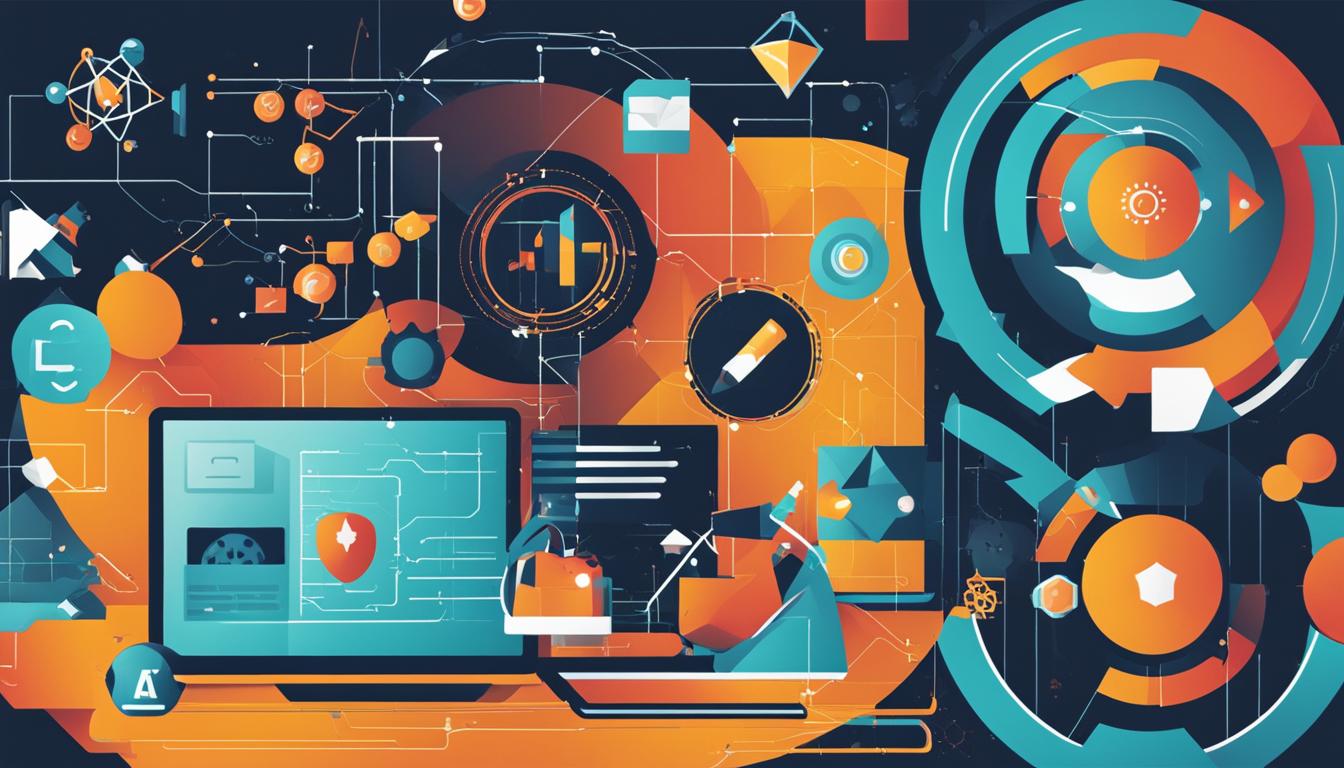In today’s rapidly advancing technological landscape, terms like AI and automation are often used interchangeably. However, it is essential to understand that they represent distinct concepts with different capabilities and applications.
Key Takeaways:
- AI and automation are two distinct technologies with different approaches and capabilities.
- Automation focuses on the use of technology to automate repetitive tasks and improve efficiency, while AI aims to simulate human thinking and decision-making.
- Both AI and automation offer benefits to businesses, such as improved productivity and cost savings.
- Automation is best suited for rule-based, repetitive tasks, while AI is used for non-repetitive tasks that require analysis and decision-making based on learning from experience.
- Proper planning and implementation are necessary to mitigate the risks associated with AI and automation, such as job displacement and cybersecurity concerns.
What is Automation?
Automation is the use of technology to perform tasks that were historically done by humans. It involves leveraging software and systems to automate repetitive and rule-based processes, improving efficiency and productivity in various industries. One commonly used form of automation is Robotic Process Automation (RPA), which utilizes software robots to execute tasks that were previously performed by humans.
With the advancement of automation process software, businesses can streamline their operations and reduce costs. Automation offers benefits such as increased productivity, improved accuracy, and reduced human error. By automating repetitive tasks, employees have more time to focus on strategic and value-added activities, enhancing overall business performance.
Automation finds applications in different industries, including manufacturing, healthcare, finance, customer service, and logistics. In manufacturing, automation enables the use of machines and robots to perform tasks such as assembly and packaging, increasing production speed and quality. In healthcare, automation optimizes administrative processes, such as appointment scheduling and medical record management, allowing healthcare professionals to focus on patient care.

Benefits of Automation:
- Improved efficiency and productivity
- Reduced human error
- Cost savings
- Increased accuracy and consistency
Automation in different industries:
| Industry | Automation Applications |
|---|---|
| Manufacturing | Robotic assembly, packaging automation |
| Healthcare | Appointment scheduling, medical record management |
| Finance | Financial data analysis, invoice processing |
| Customer Service | Chatbots for customer support, call routing automation |
| Logistics | Warehouse automation, inventory management |
What is AI?
Artificial Intelligence (AI) is a software simulation of human intelligence. It involves developing applications that can perform complex and unique tasks that typically require human intelligence. AI has subsets such as machine learning, natural language processing, and computer vision. Machine learning uses algorithms to learn patterns in data and make predictions. Natural language processing allows computers to interpret and generate human language. Computer vision enables computers to analyze visual information. AI is used in various industries, including finance, retail, healthcare, and customer service.
Subsets of AI
AI encompasses different subsets that enable computers to perform specific tasks:
- Machine Learning: Algorithms that enable computers to learn from data and make predictions.
- Natural Language Processing: Techniques that allow computers to understand and generate human language.
- Computer Vision: Technology that enables computers to analyze visual information and interpret images and videos.
Applications of AI
AI has a wide range of applications across various industries:
| Industry | AI Applications |
|---|---|
| Finance | Fraud detection, algorithmic trading, customer service chatbots |
| Retail | Product recommendation systems, virtual shopping assistants |
| Healthcare | Diagnosis assistance, predictive analytics, personalized medicine |
| Customer Service | Virtual agents, chatbots, voice assistants |
AI continues to evolve and find new applications in various industries, improving efficiency, decision-making, and customer experience.
Similarities Between AI and Automation
When comparing AI and automation, it becomes apparent that these technologies share some common features. Despite their distinct approaches and capabilities, both AI and automation aim to improve efficiency and productivity in businesses.
One of the key similarities between AI and automation is their utilization of technology to perform tasks. Automation involves the use of software or robotic systems to automate repetitive tasks that were previously performed by humans. Similarly, AI relies on sophisticated algorithms to simulate human thinking and decision-making, enabling machines to perform complex tasks.
Furthermore, both AI and automation have the ability to analyze data and make decisions based on the information they receive. Automation systems can analyze large amounts of data to identify patterns and perform actions accordingly. AI, on the other hand, can learn from data and experiences to make predictions, recognize patterns, and generate insights.
Table: Common Features of AI and Automation
| Features | AI | Automation |
|---|---|---|
| Data Analysis | ✓ | ✓ |
| Decision-Making | ✓ | ✓ |
| Efficiency Improvement | ✓ | ✓ |
While AI and automation share common features, it’s important to note that their approach and capabilities differ. Automation primarily focuses on repetitive tasks and follows pre-programmed rules, making it ideal for streamlining processes. AI, on the other hand, aims to replicate human intelligence and is better suited for non-repetitive tasks that require learning from experience.
By understanding the similarities and differences between AI and automation, businesses can effectively implement these technologies to achieve their desired outcomes.
Differences Between AI and Automation
When comparing AI and automation, it is important to understand their fundamental distinctions. Automation focuses on streamlining repetitive tasks and following pre-programmed rules, while AI aims to replicate human thinking and decision-making processes. While both technologies offer benefits to businesses, their capabilities and approach set them apart.
One key difference is that automation is best suited for rule-based tasks that are repetitive in nature. Automated systems can perform these tasks with precision and efficiency, reducing the need for human intervention. On the other hand, AI is designed to handle non-repetitive tasks that require analysis and decision-making based on learning from experience. It can adapt and improve its performance over time, making it suitable for complex and unique challenges.
Distinguishing Features
Another distinction lies in the learning and evolving capabilities of AI. While automation does not involve learning from experience, AI systems are designed to continuously learn and improve. Through machine learning algorithms, AI can analyze vast amounts of data, identify patterns, and make predictions. This ability to learn and adapt sets AI apart from automation, allowing it to tackle more complex and dynamic tasks.
In summary, the main differences between AI and automation lie in their capabilities and approach. Automation focuses on repetitive tasks and follows pre-programmed rules, while AI simulates human thinking and decision-making. Both technologies offer unique benefits to businesses, depending on the nature of the tasks at hand.
| Automation | Artificial Intelligence | |
|---|---|---|
| Task Type | Repetitive and rule-based | Non-repetitive and complex |
| Learning | No learning capabilities | Continuous learning and improvement |
| Decision-making | Follows pre-programmed rules | Simulates human decision-making |
| Flexibility | Less flexible | Adapts to new situations |
Understanding the differences between AI and automation is crucial for businesses seeking to harness the potential of these technologies. By recognizing the capabilities and limitations of each, organizations can make informed decisions about their implementation, ensuring that the right technology is applied to the right tasks. While automation excels in repetitive and rule-based processes, AI offers the ability to handle diverse and rapidly changing scenarios, making it a powerful tool for enhancing decision-making and problem-solving.
Benefits and Risks of AI and Automation
AI and automation offer significant benefits to businesses, but they also come with certain risks. Understanding the advantages and disadvantages of these technologies is crucial for making informed decisions about their implementation. Let’s explore the benefits and risks of AI and automation:
Benefits of AI and Automation
- Improved Efficiency: Both AI and automation streamline processes, reduce manual effort, and enhance productivity. By automating repetitive tasks and utilizing AI algorithms, businesses can achieve faster and more accurate results.
- Enhanced Decision-Making: AI and automation can analyze large amounts of data and generate valuable insights. This enables businesses to make data-driven decisions, identify patterns, and optimize performance.
- Personalized Experiences: AI-powered technologies like chatbots and recommendation systems can provide personalized customer experiences. By understanding individual preferences and behavior, businesses can offer tailored solutions and increase customer satisfaction.
- Cost Savings: Automation eliminates the need for manual labor, reducing operational costs. AI technologies can also automate complex tasks that would otherwise require hiring additional personnel, resulting in significant cost savings.
These benefits make AI and automation valuable tools for businesses looking to improve efficiency, decision-making, customer experience, and cost-effectiveness.
Risks of AI and Automation
- Job Displacement: Automation can lead to job displacement as certain roles become obsolete. While it can create new job opportunities, reskilling and upskilling the workforce is essential to mitigate the impact of job losses.
- Bias and Ethical Concerns: AI algorithms are trained on historical data, which may contain biases. If not addressed properly, this can result in biased decision-making processes, perpetuating existing inequalities. Ethical considerations must be taken into account to ensure fair and responsible use of AI technologies.
- Cybersecurity Risks: As AI and automation become more prevalent, they also become attractive targets for cyber attacks. Safeguarding systems and data from security breaches and unauthorized access is crucial to maintain the integrity and confidentiality of information.
- Dependency on Technology: Overreliance on AI and automation can create a dependency on technology. It’s important to strike a balance and ensure that there are backup plans and human oversight to minimize the impact of technological failures.
While the benefits of AI and automation are significant, organizations must also address these risks through proper planning, implementation, and ongoing monitoring. By doing so, businesses can harness the full potential of AI and automation while mitigating potential drawbacks.
| Benefits of AI and Automation | Risks of AI and Automation |
|---|---|
| Improved efficiency | Job displacement |
| Enhanced decision-making | Bias and ethical concerns |
| Personalized experiences | Cybersecurity risks |
| Cost savings | Dependency on technology |
This table summarizes the benefits and risks of AI and automation. It provides a clear comparison of the advantages and potential drawbacks, helping businesses make informed decisions about adopting these technologies.

Conclusion
In conclusion, AI and automation are two valuable technologies that businesses can leverage to improve efficiency, productivity, and customer experience. While automation focuses on performing repetitive tasks and follows pre-programmed rules, AI aims to simulate human thinking and decision-making. Both AI and automation have their own unique benefits and applications in various industries.
Automation offers benefits such as improved efficiency, reduced human error, and cost savings. It can streamline operations and free up employees’ time to focus on more valuable tasks. Additionally, automation allows businesses to make data-driven decisions through data analysis and process optimization.
On the other hand, AI can perform complex tasks, improve customer experience, and provide personalized recommendations. It has applications in industries such as finance, retail, healthcare, and customer service. However, it’s important to consider the risks associated with AI and automation, such as job displacement, bias, and cybersecurity. Proper planning, implementation, and ongoing monitoring can mitigate these risks and ensure the successful integration of AI and automation into business operations.
Overall, by understanding the similarities and differences between AI and automation, businesses can make informed decisions about their implementation and successfully leverage the benefits of these technologies. With careful consideration and strategic planning, AI and automation can revolutionize business processes, drive growth, and enhance competitiveness in the increasingly digital world.
FAQ
What is the difference between AI and automation?
AI involves developing algorithms that can learn and perform complex tasks, while automation focuses on using technology to automate repetitive tasks and improve efficiency.
What is automation?
Automation is the use of technology to perform tasks that were historically done by humans. It can range from simple rule-based software to complex systems that handle specific business processes.
What is AI?
AI is a software simulation of human intelligence. It involves developing applications that can perform complex and unique tasks that typically require human intelligence. AI has subsets such as machine learning, natural language processing, and computer vision.
What are the similarities between AI and automation?
Both AI and automation aim to improve efficiency and productivity in businesses. They both involve the use of technology to perform tasks and can analyze data to make decisions.
What are the differences between AI and automation?
Automation focuses on performing repetitive tasks and follows pre-programmed rules, while AI aims to simulate human thinking and decision-making. Automation is best suited for rule-based tasks, while AI is used for non-repetitive tasks that require analysis and decision-making based on learning from experience.
What are the benefits and risks of AI and automation?
Automation improves efficiency, reduces human error, and frees up time for employees. AI can perform complex tasks, improve customer experience, and provide personalized recommendations. However, automation can lead to job displacement and dependency on technology, while AI can be biased and pose cybersecurity risks.
 Skip to main content
Skip to main content


